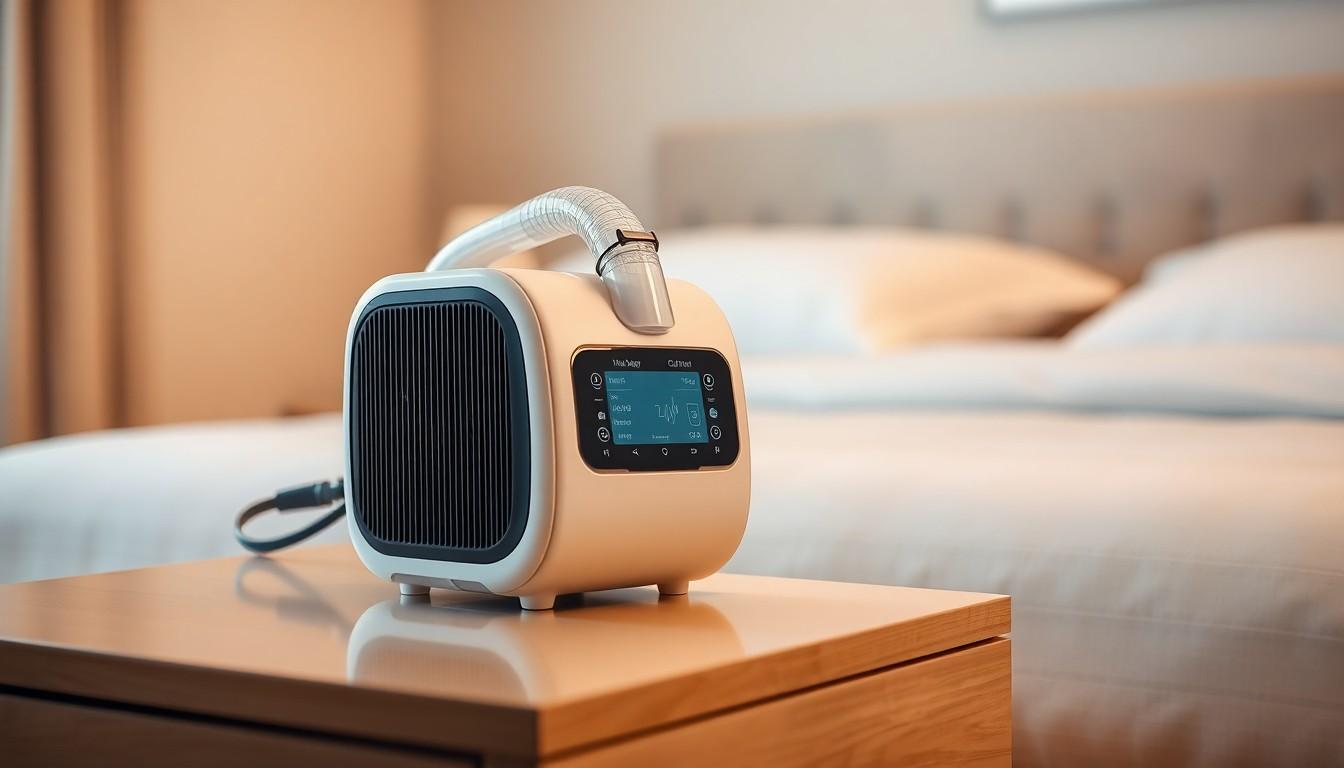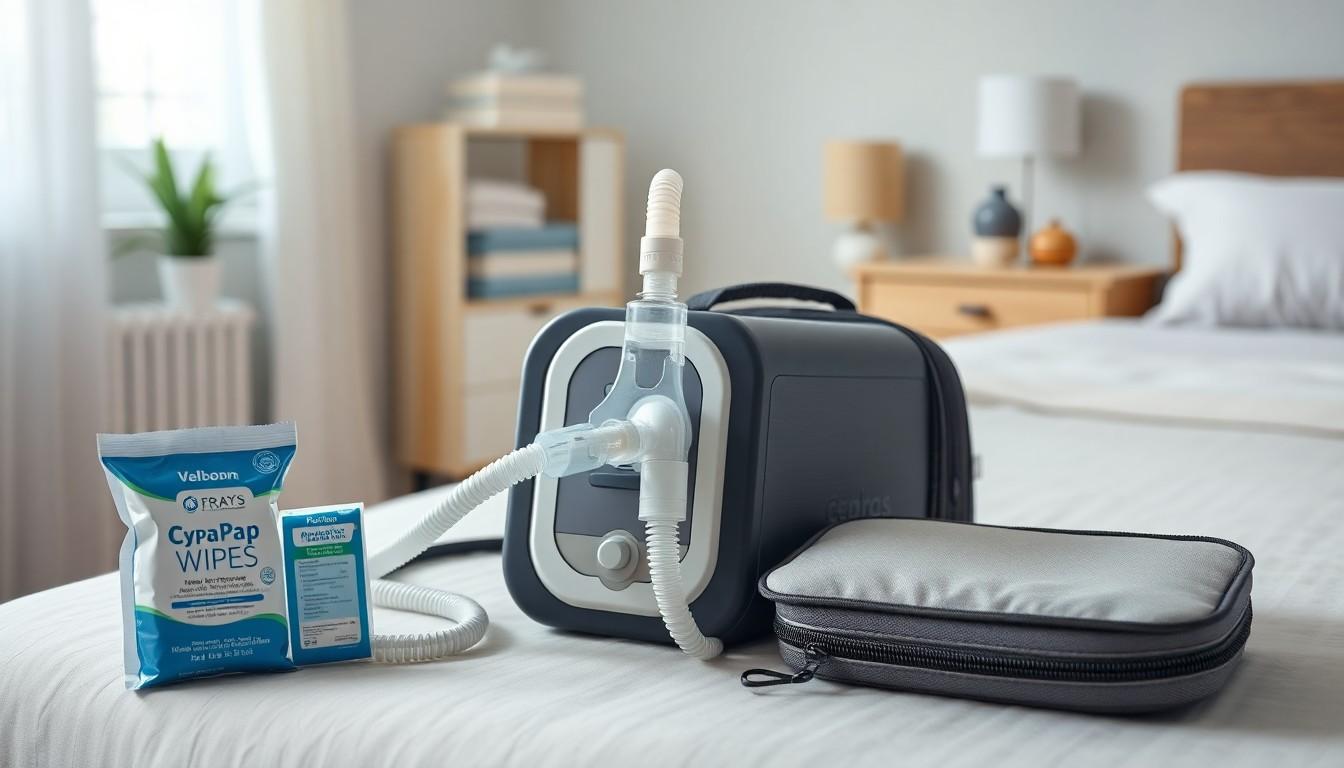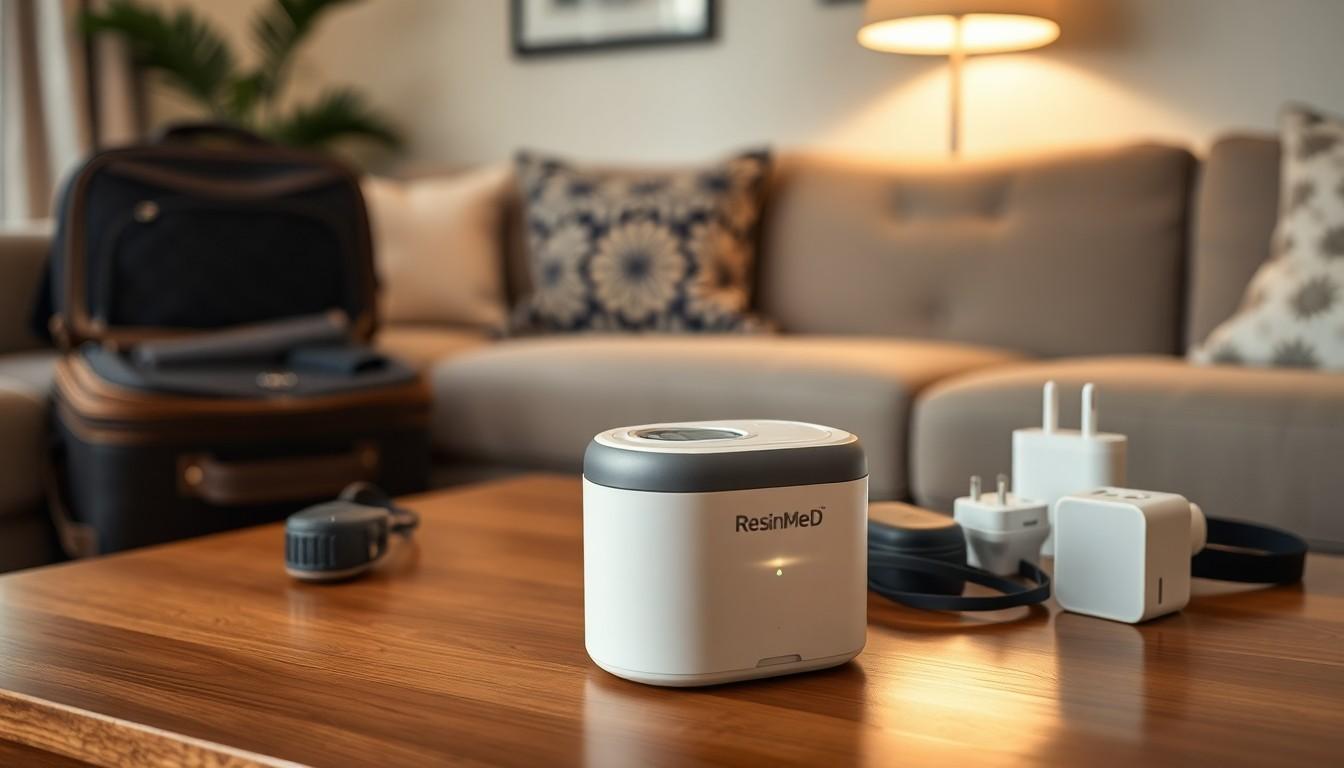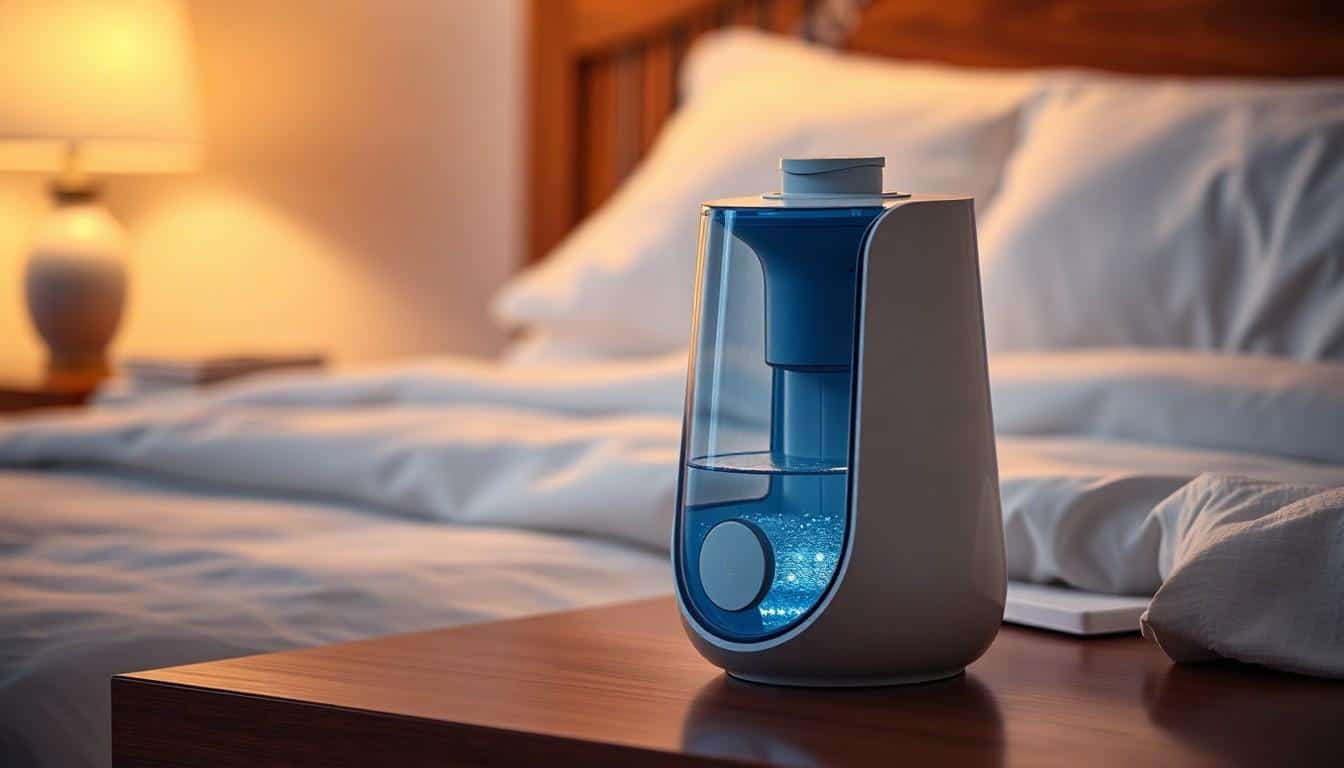Struggling with sleep apnea but hate being tethered to a bulky CPAP machine? Portable CPAP devices are revolutionizing sleep therapy by offering the same effective treatment in a compact, travel-friendly package. These innovative devices ensure you’ll never have to compromise your sleep quality, whether you’re camping in the wilderness or staying at a hotel.
For the millions of people managing sleep apnea, portable CPAP machines and CPAP equipment provide a liberating alternative to traditional units. They’re lightweight, often weighing less than two pounds, and many run on battery power. You’ll find these modern devices packed with smart features like bluetooth connectivity and automated pressure adjustment, making them perfect for maintaining your sleep therapy wherever life takes you.
Key Takeaways
- Portable CPAP devices provide effective sleep apnea treatment in a compact, travel-friendly design weighing between 0.5-2 pounds, with battery life ranging from 8-20 hours
- Modern portable CPAP machines feature advanced capabilities like Bluetooth connectivity, automatic pressure adjustment, and data tracking while maintaining quiet operation at 25-30 dB
- Key components include air filtration systems, pressure generators (4-20 cm H2O), optional humidification chambers, and versatile power options including batteries, AC adapters, and USB-C charging
- Premium models offer advanced features like built-in humidifiers and smart connectivity, while budget-friendly options focus on core functionality with basic pressure controls
- Regular maintenance is crucial, with daily mask cleaning, weekly tubing sanitization, and periodic component replacement every 3-6 months for optimal performance
- Important buying considerations include power source options, size/weight factors, and specific features matching individual therapy needs and travel requirements
What Are Portable CPAP Devices
Portable CPAP devices are compact medical devices designed to treat obstructive sleep apnea while offering mobility and convenience. These lightweight machines deliver continuous positive airway pressure through a mask to maintain open airways during sleep.
How Portable CPAP Machines Work
Portable CPAP machines operate by drawing in ambient air through an internal filter system. The filtered air passes through a small motor that pressurizes it to your prescribed settings, delivering a steady stream of air through a flexible tube connected to your mask. The pressurized air prevents airway collapse by maintaining consistent positive pressure throughout your breathing cycle.
Key Components and Features
Essential components of portable CPAP devices include:
- Air Filtration System: Removes particles dust smoke from incoming air
- Pressure Generator: Creates precise air pressure levels between 4-20 cm H2O
- Humidification Chamber: Optional feature that adds moisture to prevent nasal dryness, offering CPAP humidifier benefits like enhanced comfort and reduced irritation
- Control Interface: Digital display for pressure settings sleep data monitoring
- Power Options: Built-in batteries AC adapters USB-C charging capabilities
- Smart Features: Bluetooth connectivity automatic pressure adjustment data tracking
Key specifications:
| Feature | Typical Range |
|---|---|
| Weight | 0.5-2 pounds |
| Battery Life | 8-20 hours |
| Noise Level | 25-30 dB |
| Pressure Range | 4-20 cm H2O |
- Compact design for travel convenience
- Lightweight materials to reduce carrying burden
- Automated pressure adjustment based on breathing patterns
- Data tracking capabilities for monitoring therapy effectiveness
Benefits of Using Portable CPAP Devices

Portable CPAP devices deliver effective sleep apnea treatment through compact, lightweight designs that enhance mobility and convenience. These modern machines combine essential features with travel-friendly capabilities to ensure consistent therapy anywhere.
Travel-Friendly Design
Portable CPAP machines, like a CPAP machine for travel, transform sleep apnea treatment into a compact solution for travelers. The ResMed AirMini weighs 10.6 ounces – lighter than an iPad – fitting easily in carry-on luggage or travel bags. Ultra-compact models like the Transcend Micro match the size of handheld gaming devices, while the Breas Z2 features a low-profile build for enhanced portability.
- Extended battery life: 8-16 hours of continuous use on a single charge
- Multiple power options:
- Internal rechargeable batteries
- External battery packs
- Solar charging compatibility
- 12V DC car adapters
- Power management features:
- Battery level indicators
- Low-power operation modes
- Quick-charging capabilities
- Dual charging options
| Device Feature | Specification |
|---|---|
| Weight | 10.6 ounces (ResMed AirMini) |
| Power Duration | 8-16 hours per charge |
| Charging Time | 2-4 hours (typical) |
| Power Sources | AC/DC/Battery/Solar |
Best Portable CPAP Options on the Market

Portable CPAP devices offer various features to match different needs and budgets. Here’s a detailed look at premium and budget-friendly options available for sleep apnea treatment.
Premium Models
The VortexPAP leads the premium portable CPAP segment with innovative vortex airflow technology. This University of Cincinnati creation eliminates the need for tight-fitting masks while maintaining optimal pressure levels.
Key features of premium portable CPAP devices:
- Built-in humidifiers for enhanced comfort
- Multiple pressure settings for personalized therapy
- Battery-powered operation for travel convenience
- Advanced digital controls for precise adjustments
- Bluetooth connectivity for therapy tracking
Budget-Friendly Choices
Budget-conscious users have access to effective portable CPAP options with essential features. These devices focus on core functionality while maintaining reliable performance.
Standard features in budget models:
- Basic pressure controls
- Manual settings adjustment
- Compact design for portability
- Standard filtration systems
- AC power compatibility
- Simplified user interface
| Model Category | Weight Range | Battery Life | Notable Features |
|---|---|---|---|
| Premium | 10.6-16 oz | 8-16 hours | Vortex technology, smart features |
| Budget | 1-2 lbs | 4-8 hours | Basic controls, standard filtration |
Note: All models mentioned maintain medical-grade performance standards for sleep apnea treatment even though price differences.
Caring for Your Portable CPAP Machine

Proper maintenance of portable CPAP devices ensures optimal performance and longevity. Studies show 81% of CPAP users travel with their devices, making proper care essential for both home and travel use.
Cleaning and Maintenance Tips
Daily cleaning rituals protect your portable CPAP device from bacteria buildup:
- One CPAP mask cleaning tip is to wipe the mask cushion each morning with CPAP-specific wipes.
- Clean mask, headgear and tubing with mild soap and warm water
- Air dry all components completely before reassembly
- Replace filters according to manufacturer guidelines
- Disinfect humidifier chamber (if equipped) weekly
- Inspect seals and connections monthly for wear
- Store in a dust-free carrying case when not in use
- Keep device away from direct sunlight and heat sources
- Place in a dry environment with temperatures between 41-95°F
- Position the machine on a flat, stable surface during use
- Coil tubing loosely to prevent kinks or damage
- Remove water from humidifier chamber before storage
| Component | Cleaning Frequency | Replacement Timeline |
|---|---|---|
| Mask | Daily | Every 3-6 months |
| Filters | Weekly check | Every 2-4 weeks |
| Tubing | Weekly | Every 3 months |
| Headgear | Weekly | Every 6 months |
Important Considerations Before Buying

Selecting a portable CPAP device requires evaluating several critical factors to ensure optimal performance for your specific needs. Understanding these key elements helps narrow down the options to find your ideal device.
Power Source Options
Portable CPAP devices offer multiple power configurations to maintain continuous operation during travel:
- Internal batteries provide 8-16 hours of runtime on a single charge
- External battery packs extend usage for multi-day trips
- Solar charging compatibility enables off-grid operation
- AC adapters connect to standard wall outlets
- DC adapters work with vehicle power outlets
- Quick-charging technology reduces downtime between uses
Size and Weight Factors
The physical dimensions of portable CPAP devices impact their travel-friendliness:
- Ultra-compact models like the ResMed AirMini weigh 10.6 ounces
- Standard portable units range from 1-2 pounds
- Footprint sizes vary from handheld gaming device dimensions to small lunchbox sizes
- Carrying case dimensions affect fitting in carry-on luggage
- Component storage space requirements include:
- Mask and tubing
- Power adapters
- Filters
- Optional humidifier
| Model Example | Weight | Dimensions |
|---|---|---|
| ResMed AirMini | 10.6 oz | 5.4″ x 3.3″ x 2.1″ |
| Transcend Micro | 13.5 oz | 4.5″ x 3.7″ x 2.0″ |
| Breas Z2 | 14.8 oz | 6.5″ x 3.3″ x 2.0″ |
The VortexPAP technology demonstrates recent innovations in portable design by eliminating bulky components while maintaining therapeutic effectiveness. These modern devices emphasize minimalistic designs that enhance both portability and user compliance.
Conclusion
Portable CPAP devices have revolutionized sleep apnea treatment by offering a perfect blend of mobility convenience and therapeutic effectiveness. These compact powerhouses ensure you’ll never have to compromise your sleep quality while traveling or enjoying outdoor activities.
Whether you choose a premium model with advanced features or a budget-friendly option focused on essential functions you’ll find a device that fits your lifestyle and treatment needs. With proper maintenance and care your portable CPAP can be a reliable companion for years to come.
The future of sleep apnea treatment is here – lightweight efficient and designed with your freedom in mind. You can now manage your sleep apnea effectively without being tied down to bulky traditional machines.
Frequently Asked Questions
What are portable CPAP devices?
Portable CPAP devices are compact medical machines designed to treat sleep apnea while offering mobility. They’re lighter and smaller than traditional CPAP machines, typically weighing under two pounds, and work by delivering pressurized air through a mask to keep airways open during sleep.
How long do portable CPAP batteries last?
Most portable CPAP devices offer 8-16 hours of battery life on a single charge. They come with various power options, including internal rechargeable batteries, external battery packs, and solar charging compatibility, making them reliable for travel and outdoor activities.
Are portable CPAPs as effective as traditional machines?
Yes, portable CPAP machines maintain medical-grade performance standards and are equally effective at treating sleep apnea. While they’re smaller, they provide the same essential functionality, including pressure adjustment and air filtration, ensuring quality treatment.
How often should I clean my portable CPAP device?
Clean the mask cushion daily, check filters weekly, and inspect seals and connections monthly. Regular maintenance ensures optimal performance and extends the device’s lifespan. Follow the manufacturer’s specific cleaning guidelines for best results.
What should I consider before buying a portable CPAP?
Key considerations include power source options, size, weight, and price range. Premium models offer advanced features like built-in humidifiers and digital controls, while budget options focus on essential functionality. Consider your travel needs and budget when making a selection.
Can I travel with a portable CPAP device?
Yes, portable CPAP devices are specifically designed for travel. Models like the ResMed AirMini weigh just 10.6 ounces and fit easily in carry-on luggage. They comply with airline regulations and feature travel-friendly designs for various situations, including camping and hotel stays.



